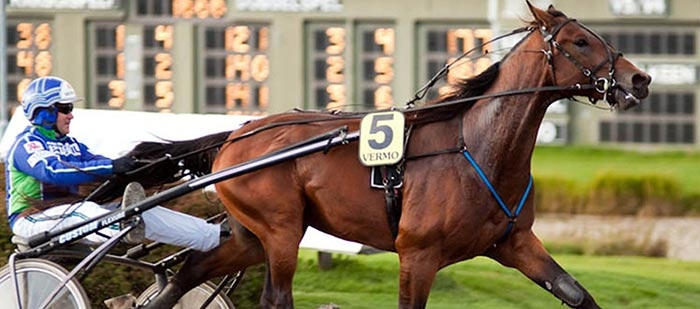
About two hundred years ago, a Thoroughbred named Messenger, imported from Great Britain, became the ancestor of a new horse breed in the United States: the Standardbred, popularly known as the American Trotter or American Standard. In addition to producing trotters, the breed also includes pacers.
The name Standardbred was created in 1879 and came from the criterion required for animals to be registered in the Stud Book: horses had to cover one mile (1.6 km) in the standard time of 2 minutes and 30 seconds. Those unable to meet this time were not registered. Over time and with improvements to the breed, this time was reduced to 1 minute and 50 seconds.
They stand between 1.50 m and 1.70 m (15–16.3 hands), weigh between 360 and 450 kg, and their coat colors range from bay, black, chestnut, and sorrel, though all colors are accepted. With a straight head and broad forehead, a slightly arched neck, a long body, and strong shoulders, they are built to produce long, powerful strides.

Known worldwide for their skill in harness racing, these are muscular, solid, intelligent, and fast horses. The races take the same name as the breed, and the animals are treated like true athletes, handled by drivers who are responsible for guiding them throughout the course.
Their calm and sweet temperament changes on the track, where they become highly competitive, displaying vitality and an eagerness to get ahead of the others.
In harness racing, trotters move their legs in diagonal pairs — the front right and rear left advance together, as do the opposite pair. Pacers, on the other hand, use lateral movement, with the front and rear legs on the same side moving in unison. The breed can also perform other gaits, including the canter.

In the United States, “trotter” and “pacer” races are held separately, as they are distinct categories. The world record for the trotting mile belongs to the horse Prakas, who in 1982 covered a mile in 1 minute 53 seconds, while the pacing mile record belongs to Niatross, who in 1977 ran it in 1 minute 49 seconds.
The Standardbred’s excellence at trotting and pacing originates from a genetic mutation in the DMRT3 gene, which affects the spinal cord and thus coordinates the animal’s movements.
Contrary to what some might think, these horses remain valuable after retirement. Known as the fastest trotters in the world, they are often used to improve other breeds worldwide. They also appear in shows and are the primary horses used by the Amish to pull their carriages.
In Brazil, the breed is still not very popular, though this is changing, as Argentina has begun breeding Standardbreds and selling them in the country.
This is a breed in constant growth, spreading across the world thanks to its versatility and adaptability to many activities beyond the races for which it was originally developed.
